Are There Negative Side Effects of Hearing Aids?
Are there negative side effects of hearing aids? Yes, but they're usually mild and temporary. Discover how to handle adjustment challenges.
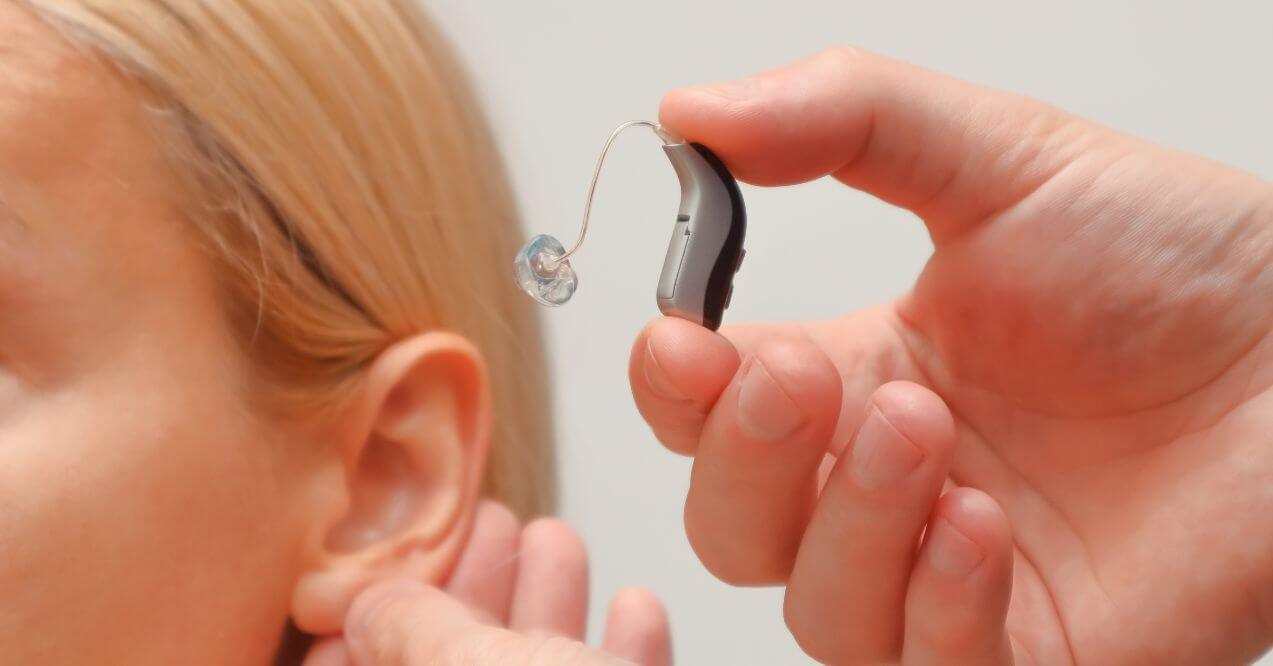

Hearing aids have transformed millions of lives, bringing back the joy of conversation, music, and everyday sounds. Yet many people hesitate before taking that first step. Are there negative side effects of hearing aids? This question deserves an honest answer.
This article explores the physical, emotional, and auditory challenges some people face with hearing aids. More importantly, you’ll discover practical ways to manage these issues and make your experience more comfortable.
What Are the Negative Side Effects of Hearing Aids?
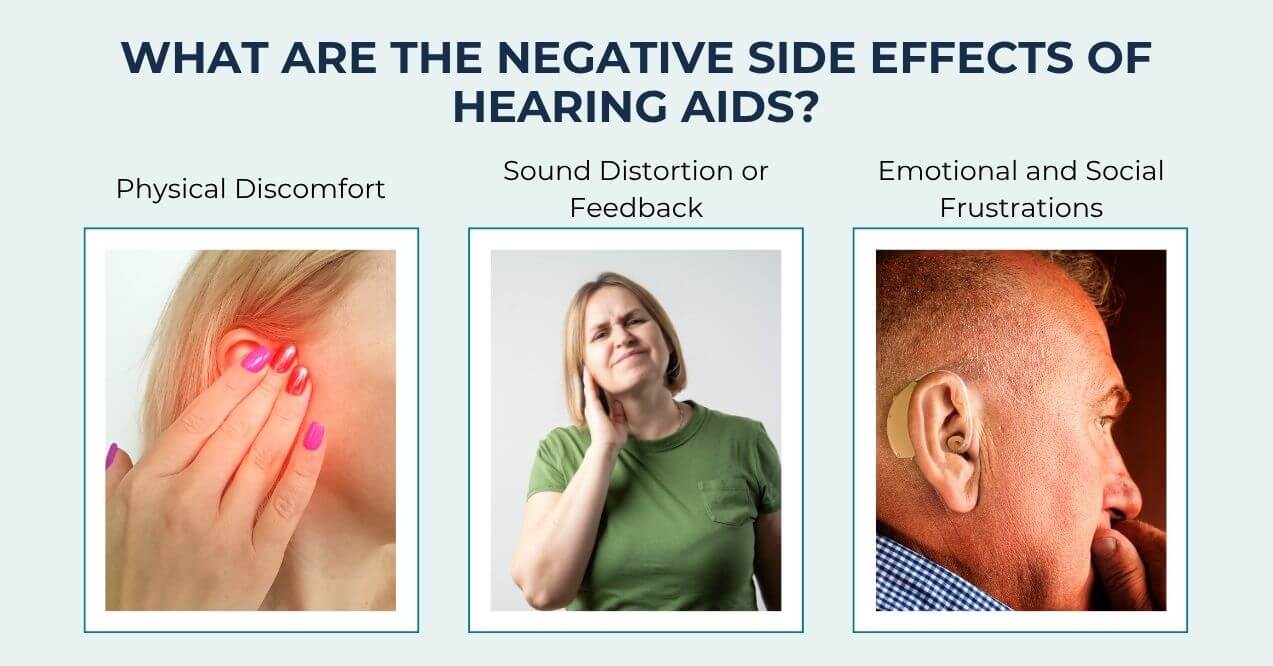
The negative side effects of hearing aids affect each person differently, though most are temporary and manageable. Common challenges include physical discomfort, sound-related issues, and adjustment difficulties during the first weeks of use.
Most side effects occur during the initial adjustment period. Your ears and brain need time to adapt to amplified sounds and the physical presence of the devices. Here are the main categories of challenges users face:
- Physical issues – soreness, itching, pressure
- Sound problems – feedback, distortion, overwhelming noise
- Emotional impacts – fatigue, frustration, self-consciousness
Physical Discomfort
Hearing aid discomfort often starts with ear soreness or irritation. Poor fit causes most physical problems, though extended wear and skin sensitivities also play a role. Red or tender spots may develop where the device touches your ear canal or outer ear. Some users experience itching from moisture buildup or allergic reactions to device materials.
Sound Distortion or Feedback
Whistling sounds, known as feedback, occur when amplified sound escapes and re-enters the microphone. Background noises may seem unnaturally loud at first. Your own voice might sound strange or hollow. These hearing aid challenges typically decrease as your brain adjusts to processing amplified sounds. Most people notice significant improvement within 2-4 weeks of consistent use.
Emotional and Social Frustrations
Adjusting to hearing aids involves more than physical adaptation. Some people feel self-conscious about wearing visible devices. Constant sound stimulation can cause mental fatigue, especially in busy environments. Early overwhelm is normal as your brain relearns to filter important sounds from background noise. Social situations may feel challenging until you develop strategies for managing different sound environments.
Do Hearing Aids Make Tinnitus Worse?
Tinnitus responses to hearing aids vary significantly among users. Some people notice their ringing or buzzing becomes more apparent initially. Others experience substantial tinnitus relief once their devices are properly programmed. The key lies in personalized fitting and frequency adjustments.
Many tinnitus sufferers find that hearing aids mask the internal sounds by providing external stimulation. Your brain focuses on real environmental sounds rather than phantom noises. However, improper settings may temporarily increase tinnitus awareness. Working with your hearing specialist ensures optimal programming for your specific needs.
Natural support options may complement your hearing aid experience. Many people explore supplements for tinnitus alongside their hearing devices. Nutrients that support nerve function and circulation may help manage tinnitus symptoms naturally.
Maintenance and Technical Hiccups
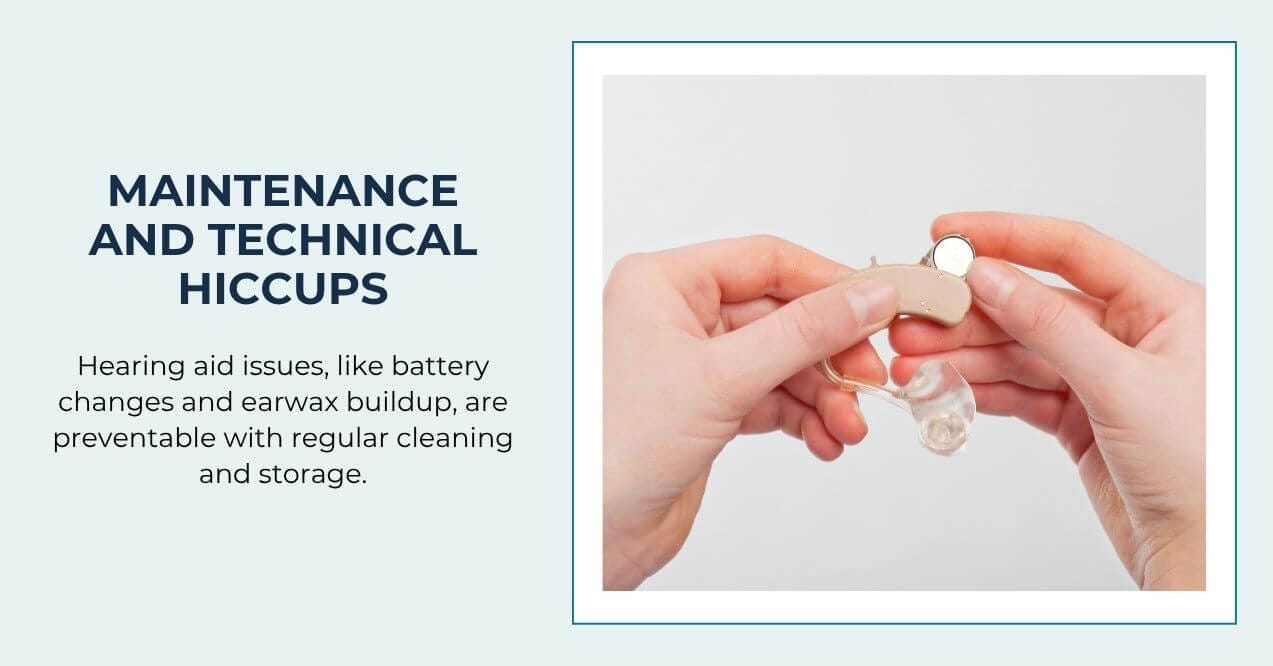
Real-world hearing aid use involves occasional technical challenges. Battery changes interrupt your day, especially with smaller devices requiring frequent replacements. Moisture from sweat or humidity can cause temporary malfunctions. Earwax buildup blocks sound tubes and microphones, reducing effectiveness.
Modern devices add new complications. Bluetooth connections drop unexpectedly, leaving you without phone connectivity. Software glitches require resets or professional reprogramming. Microphone ports clog with debris, distorting sound quality. These issues frustrate users but rarely indicate serious problems.
Regular maintenance prevents most technical difficulties. Daily cleaning removes wax and debris before they cause issues. Proper storage in dry containers extends device life and reliability.
How to Avoid Common Device Issues?
Prevention beats repair when maintaining hearing aids. Clean your devices nightly with provided tools and soft cloths. Store them in dehumidifying cases to prevent moisture damage. Replace wax guards according to manufacturer recommendations, typically every 1-2 months. Schedule professional cleanings every 3-6 months for thorough maintenance. Keep spare batteries handy to avoid unexpected power loss. These simple habits significantly reduce technical problems.
When Should Side Effects Concern You?
Not all hearing aid side effects require professional attention. However, certain symptoms signal the need for immediate help. Sharp, stabbing pain in your ears indicates poor fit or injury. Sudden hearing changes, either improvement or decline, warrant quick evaluation. Severe headaches lasting more than a few days suggest adjustment issues.
Persistent emotional distress also deserves attention. While initial frustration is normal, ongoing anxiety or depression related to hearing aid use needs addressing. Professional support helps identify whether device adjustments or counseling would improve your experience.
Watch for signs of infection: discharge, foul odor, or increasing pain. These symptoms require prompt medical evaluation.
How to Make Hearing Aids More Comfortable?
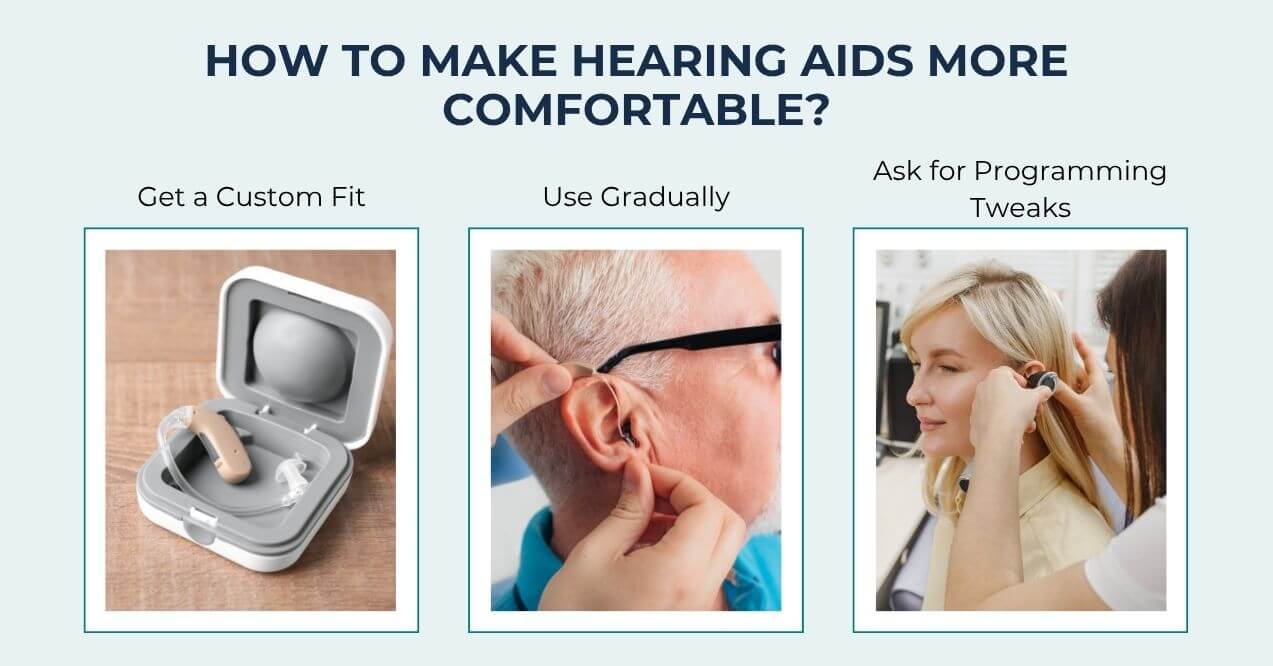
Comfort improvements often require small adjustments rather than major changes. Start by addressing the most bothersome issue first. Physical discomfort usually responds well to fitting modifications. Sound problems often need programming tweaks. Emotional challenges may require gradual exposure and support strategies.
Creating positive experiences with your devices builds confidence. Choose quiet environments for initial practice. Gradually introduce more complex sound situations. Celebrate small victories as your comfort level increases. Many users report significant improvement within the first month of consistent wear.
Your attitude affects adaptation success. Viewing hearing aids as helpful tools rather than limitations speeds adjustment. Focus on regained abilities rather than temporary discomfort.
Get a Custom Fit
Professional fitting makes the difference between tolerable and comfortable hearing aids. Custom ear molds distribute pressure evenly, preventing sore spots. Proper sizing eliminates constant repositioning. Quality materials reduce allergic reactions and skin irritation. Initial investment in precise fitting pays long-term comfort dividends. Return for adjustments without hesitation – minor modifications often solve major comfort issues.
Use Gradually
Building wear time prevents overwhelm and physical discomfort. Start with 2-3 hours daily in quiet settings. Add an hour each week as comfort increases. Take breaks when fatigue occurs. This gradual approach allows ears and brain to adapt naturally. Most people achieve full-day wear within 3-4 weeks using this method. Forcing extended use too quickly often backfires.
Ask for Programming Tweaks
Sound programming adjustments transform the hearing aid experience. Volume levels, frequency responses, and noise reduction settings all affect comfort. Your specialist can create multiple programs for different environments. Request specific adjustments for problematic situations. Modern devices allow precise customization. Don’t accept uncomfortable sound quality – solutions exist for most audio challenges through proper programming.
Support Hearing Naturally with Nutrients
As you adapt to hearing aids, supporting your overall ear health can contribute to a more comfortable experience. Many people explore wellness routines that include nutrients known for their role in general auditory and nerve health.
The PureHealth Research’s Hearing Support Formula contains a blend of carefully selected vitamins, minerals, and botanicals traditionally used to support hearing wellness. These ingredients are chosen for their role in maintaining healthy circulation, supporting nerve signaling, and promoting overall well-being.
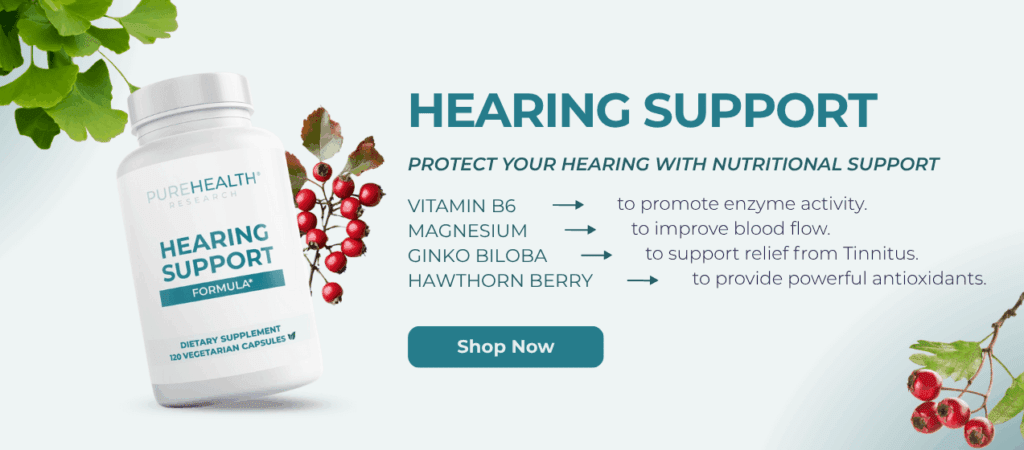
For example:
- B vitamins help support energy production and nervous system function, which includes pathways involved in hearing.
- Antioxidants may help the body defend against oxidative stress, which naturally occurs with age.
- Minerals like magnesium support various cellular processes important to overall health.
Conclusion
The negative side effects of hearing aids are real, but they don’t have to define your experience. Most challenges fade as your body and brain adapt to these helpful devices. With proper fitting, gradual use, and professional support when needed, you can overcome initial discomfort and enjoy clearer hearing.
No—when fitted correctly, hearing aids are safe. Poor fit or misuse can cause issues. Regular check-ups ensure proper function and fit. Quality devices include safety features preventing dangerous volume levels.
Listening fatigue is common during the adjustment period. Your brain works harder processing new sounds. This exhaustion decreases as you adapt. Taking regular breaks helps manage fatigue initially.
Minor fixes like repositioning may help, but persistent feedback should be checked professionally. Clean devices reduce some feedback. Proper insertion techniques also minimize whistling sounds.
Most side effects are temporary and improve with the right adjustments. Physical discomfort resolves with proper fitting. Sound issues decrease through programming changes. Patience during adjustment pays off.
Sign up for our Healthy Living newsletter!
Advertisement. This site offers health, wellness, fitness and nutritional information and is designed for educational purposes only. You should not rely on this information as a substitute for, nor does it replace, professional medical advice, diagnosis, or treatment. If you have any concerns or questions about your health, you should always consult with a physician or other health-care professional. Do not disregard, avoid or delay obtaining medical or health related advice from your health-care professional because of something you may have read on this site. The use of any information provided on this site is solely at your own risk.







